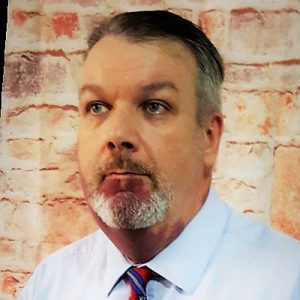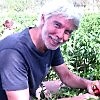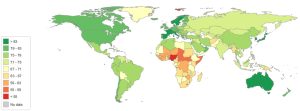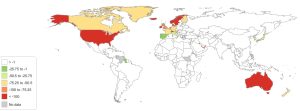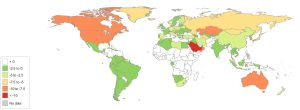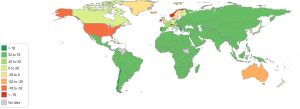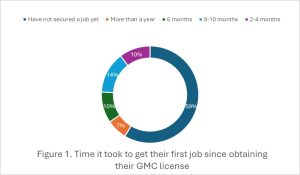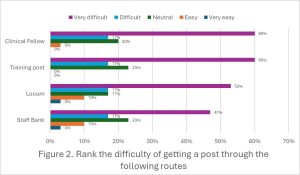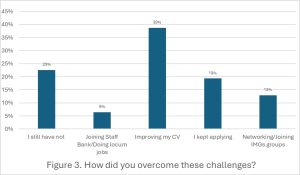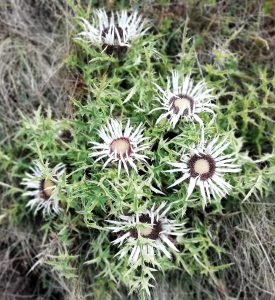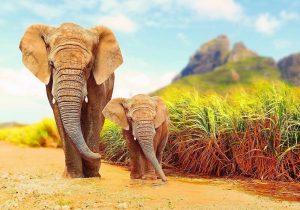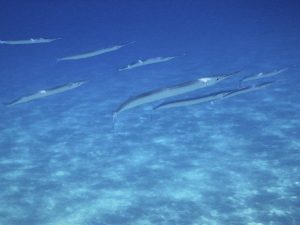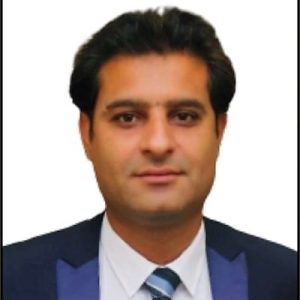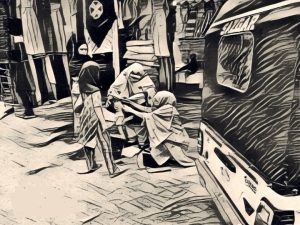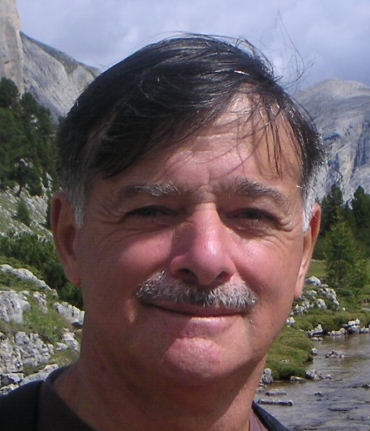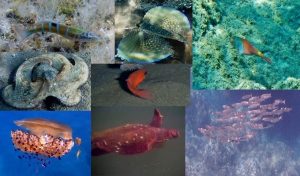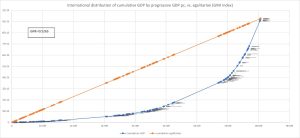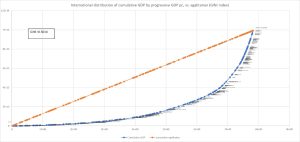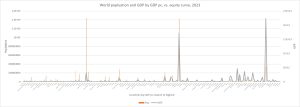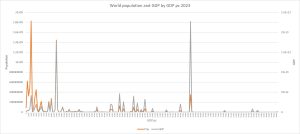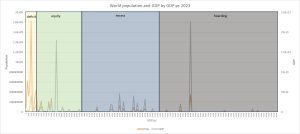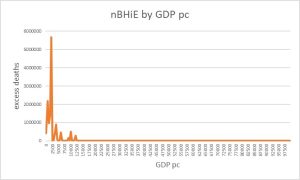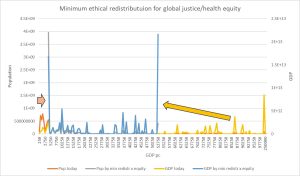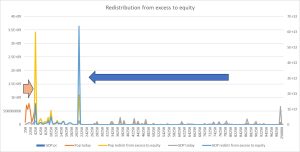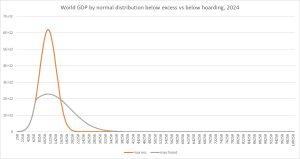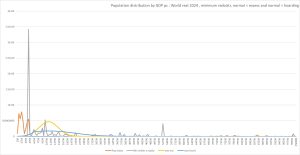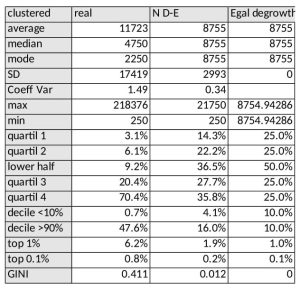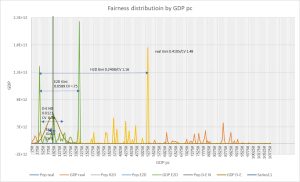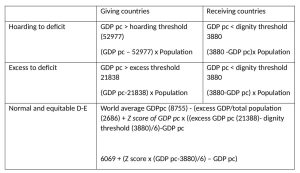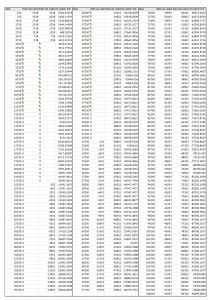IN A NUTSHELL Author's NoteAddressing the challenges of food security requires a multifaceted approach, encompassing sustainable agricultural practices, technological innovation, policy interventions, and shifts in consumer behavior. This will require a concerted effort from governments, international organizations, civil society, and individuals to create a more sustainable and equitable food system that meets the needs of current and future generations
By Philip J Gover BA MA MPH
Public Health Consultant, Cooperation Works
Food Security – Back to Basics
-
Definition of Food Security
Food security is a complex and multifaceted concept that extends beyond simply having enough food to eat. It encompasses the availability, accessibility, utilization, and stability of nutritious food for all people at all times.
- Availability: This refers to the physical presence of sufficient quantities and qualities of food in a given area. It is influenced by factors such as agricultural production, food imports/exports, food aid, and the efficiency of food supply chains. Climate change significantly impacts food availability. For example, rising temperatures can lead to reduced crop yields, while increased frequency and severity of extreme weather events, such as droughts, floods, and heatwaves, can devastate crops and livestock, impacting food production and availability (Wheeler & von Braun, 2013).
- Access: Access to food depends on an individual’s or household’s ability to obtain appropriate foods for a nutritious diet. This is influenced by economic factors such as income and purchasing power, as well as physical and social factors such as access to markets, transportation, and cultural norms. Poverty, income inequality, and discrimination can severely limit access to food, even when it is physically available. For instance, low-income households may not be able to afford nutritious foods, while marginalized communities may face barriers to accessing markets and obtaining affordable, healthy food options. This can be further exacerbated by limited access to transportation, particularly in rural areas, making it difficult to reach markets and obtain fresh, nutritious food (Sen, 1981).
- Utilization: This dimension encompasses how the human body effectively uses the nutrients from consumed food. It includes factors such as food safety, hygiene, and the presence of underlying health conditions that may impair nutrient absorption. For example, poor sanitation and inadequate access to clean water can increase the risk of foodborne illnesses, such as diarrhea, which can lead to malnutrition, dehydration, and hindered growth and development. Moreover, underlying health conditions such as HIV/AIDS and chronic diseases can impair nutrient absorption and increase vulnerability to malnutrition (Pinstrup-Andersen, 2009).
- Stability: This refers to the consistent availability of adequate food over time. Disruptions to food security can be caused by economic shocks, such as price fluctuations and market instability, as well as by climate variability, natural disasters, and political instability (Tendall et al., 2015). For example, economic downturns can lead to job losses and income insecurity, reducing people’s ability to purchase food. Similarly, armed conflicts, political instability, and natural disasters can disrupt food production, distribution, and access, leading to widespread food insecurity and displacement of populations.
Recognizing the evolving understanding of food security, two additional dimensions have been proposed:
- Agency: This dimension emphasizes the importance of individual and community empowerment in shaping food systems. It recognizes that food security is not merely about receiving food, but also about having the power to make informed choices about food production, distribution, and consumption. This includes the right to participate in decision-making processes that affect food systems, access to information and resources that support sustainable food practices, and the ability to control their own food systems (Clapp et al., 2021). For example, empowering smallholder farmers through access to markets, technology, and training can enhance their agency and contribute to more sustainable and equitable food systems.
- Sustainability: This dimension focuses on the long-term viability of food systems, ensuring that they can meet the needs of current and future generations without compromising ecological, economic, or social foundations. It emphasizes the need for food systems that are environmentally sustainable, socially equitable, and economically viable. This includes ensuring the sustainable use of natural resources, minimizing environmental impacts, and promoting social equity throughout the food supply chain (Béné, 2019).
Understanding these interconnected dimensions is crucial for developing comprehensive strategies to achieve food security for all. It is important to note that these dimensions are not mutually exclusive and often interact in complex ways. For example, improving agricultural productivity (availability) without addressing poverty and inequality (access) may not lead to improved food security outcomes for all members of society.
-
Importance of Sustainable Agricultural Practices
Sustainable agricultural practices are crucial for ensuring long-term food security while safeguarding environmental resources and promoting social equity. They aim to meet the present food needs of humanity without compromising the ability of future generations to meet their own needs. This necessitates a shift from conventional, often resource-intensive agricultural practices towards more sustainable approaches that prioritize environmental stewardship, social justice, and economic viability.
Key principles of sustainable agriculture include:
- Soil Health Management: Healthy soils are the foundation of sustainable agriculture. Practices such as conservation tillage, cover cropping, and crop rotation are essential for maintaining and improving soil health. Conservation tillage, which minimizes soil disturbance, reduces soil erosion, enhances water infiltration, and improves soil organic matter content (Lal, 2004). Cover crops, such as legumes and grasses, planted between main crops, help to suppress weeds, prevent soil erosion, and improve soil fertility by adding organic matter and fixing nitrogen. Crop rotation, the practice of planting different crops in the same field in successive seasons, helps to break disease and pest cycles, improve soil structure, and maintain soil fertility.
- Efficient Water Use: With agriculture accounting for a significant portion of global freshwater withdrawals, improving water use efficiency is critical. Techniques such as drip irrigation, which delivers water directly to plant roots, and deficit irrigation, which involves withholding water during specific growth stages, can significantly reduce water consumption while maintaining or even increasing crop yields (Postel et al., 2001). Drip irrigation, for example, can reduce water use by up to 60% compared to flood irrigation while increasing crop yields by 20-90% (Postel et al., 2001). Water harvesting techniques, such as rainwater harvesting and the construction of small dams, can also improve water availability in regions with limited rainfall.
- Biodiversity Conservation: Maintaining and enhancing biodiversity in agricultural landscapes is crucial for ecosystem services such as pollination, pest control, and nutrient cycling. Practices such as intercropping, the cultivation of multiple crops simultaneously on the same land, can increase biodiversity and provide natural pest control. Agroforestry, the integration of trees with crops or livestock, can enhance soil fertility, improve water infiltration, and provide shade for crops. Maintaining hedgerows and other natural features on farms can provide habitat for beneficial insects and pollinators, contributing to a more balanced and resilient agroecosystem. A meta-analysis by Tschumi et al. (2015) found that increasing on-farm plant diversity can enhance pest control and pollination services by 16% and 50%, respectively, reducing the need for chemical inputs.
- Integrated Pest Management (IPM): IPM combines biological, cultural, physical, and chemical control methods to manage pests and diseases while minimizing environmental risks. This approach emphasizes the use of natural enemies, such as predatory insects and beneficial microorganisms, to control pests. Cultural practices, such as crop rotation and the use of pest-resistant varieties, can also help to reduce pest populations. Physical controls, such as the use of row covers and barriers, can prevent pests from reaching crops. Chemical controls, such as the use of pesticides, should be used as a last resort and only when necessary, and should be applied in a targeted and responsible manner. Studies have shown that IPM can reduce pesticide use by up to 50% without compromising crop yields (Pretty & Bharucha, 2015).
- Climate-Smart Agriculture: Climate-smart agriculture practices aim to increase agricultural productivity and incomes, adapt and build resilience to climate change, and reduce and/or remove greenhouse gas emissions where possible (FAO, 2013). These practices include the use of drought-resistant crop varieties, improved water management, and the use of cover crops to sequester carbon. For example, the development and adoption of drought-resistant crop varieties can help farmers maintain yields in the face of increasingly unpredictable weather patterns. Improved water management practices, such as rainwater harvesting and efficient irrigation techniques, can help to reduce water consumption and minimize the impact of drought. The use of cover crops can help to improve soil health, reduce erosion, and sequester carbon dioxide, mitigating the impacts of climate change.
The benefits of sustainable agriculture extend beyond environmental considerations. By reducing reliance on external inputs, such as synthetic fertilizers and pesticides, and diversifying income streams through agrotourism, value-added product development, and other non-farm activities, sustainable agriculture can improve farm profitability and resilience to market shocks. Furthermore, by promoting fair labor practices, community engagement, and the preservation of traditional farming knowledge, sustainable agriculture can contribute to rural development and social equity.
-
Challenges in Global Food Systems
Global food systems face a multitude of interconnected challenges that threaten food security and sustainable development. These challenges are exacerbated by climate change, resource depletion, economic inequalities, and geopolitical factors, creating a complex and interconnected web of issues that require multifaceted solutions.
- Climate Change: Climate change poses a significant and growing threat to global food security. Rising global temperatures, altered precipitation patterns, and increased frequency and severity of extreme weather events (droughts, floods, heatwaves) are impacting crop yields, livestock productivity, and the availability of water resources.
-
- Impacts on Crop Production: Changes in temperature and precipitation patterns can directly impact crop yields. For example, prolonged periods of drought can lead to crop failure, while excessive rainfall can cause flooding and soil erosion, damaging crops and reducing yields. Increased temperatures can accelerate crop maturation, leading to reduced yields and lower nutritional quality. Moreover, climate change can increase the incidence and severity of pests and diseases, further impacting crop production.
-
- Impacts on Livestock Production: Climate change can significantly impact livestock production. Rising temperatures can increase heat stress in animals, leading to reduced productivity, increased mortality rates, and decreased milk and meat production. Changes in rainfall patterns can affect the availability and quality of forage, impacting livestock feed and nutrition.
-
- Impacts on Aquatic Ecosystems: Rising sea levels, ocean acidification, and changes in ocean currents can disrupt marine ecosystems, impacting fish stocks and other aquatic resources. This can have significant implications for food security, particularly for coastal communities that rely heavily on fisheries for their livelihoods and food sources.
- Resource Depletion: Soil degradation, water scarcity, and biodiversity loss are major challenges facing global food systems. Intensive agricultural practices, such as excessive use of fertilizers and pesticides, contribute to soil erosion, nutrient depletion, and water pollution. Overexploitation of water resources for irrigation threatens agricultural productivity and can lead to water scarcity and conflicts. Deforestation and habitat destruction are leading to significant biodiversity loss, impacting pollinators, natural predators, and other essential components of healthy ecosystems.
- Biodiversity Loss: The loss of biodiversity in agricultural landscapes has significant implications for food security. Biodiversity plays a crucial role in maintaining ecosystem services such as pollination, pest control, and nutrient cycling. The decline of pollinators, such as bees and butterflies, due to habitat loss, pesticide use, and climate change, can significantly impact the production of many fruits, vegetables, and other crops. Similarly, the loss of natural predators can lead to increased pest outbreaks, requiring greater reliance on chemical pesticides, which can have negative environmental and human health impacts.
- Economic Inequalities: Poverty and income inequality remain major drivers of food insecurity, limiting access to nutritious food for millions of people. Even when food is available, economic constraints can prevent individuals and households from acquiring sufficient quantities of nutritious food. This can lead to undernutrition, micronutrient deficiencies, and a higher risk of diet-related non-communicable diseases. Furthermore, economic inequalities can exacerbate the impacts of other challenges, such as climate change and resource depletion, as marginalized communities are often more vulnerable to the negative consequences of these challenges.
- Food Waste and Loss: A significant portion of food produced for human consumption is lost or wasted throughout the food supply chain, from production and harvesting to transportation, storage, and consumption. Food waste and loss not only represent a significant economic loss but also contribute to environmental degradation, as food waste in landfills generates methane, a potent greenhouse gas. Reducing food waste and loss is crucial for improving food security and mitigating climate change.
- Geopolitical Factors: International trade policies, conflicts, and geopolitical instability can significantly disrupt food production, distribution, and access. Trade restrictions, export bans, and armed conflicts can disrupt food supply chains, limit access to essential agricultural inputs, and displace populations, leading to food shortages and increased vulnerability to food insecurity.
These challenges are interconnected and often exacerbate one another. For example, climate change can exacerbate water scarcity, leading to reduced agricultural productivity and increased competition for water resources. Economic inequalities can limit access to resources and technologies needed to adapt to climate change, leaving vulnerable populations more exposed to its impacts. Addressing these challenges requires a multifaceted approach that considers the interconnectedness of these factors and recognizes the need for integrated solutions.
-
Role of Technology in Agriculture
Technology plays a crucial role in addressing the challenges facing global food systems and enhancing agricultural productivity and sustainability. Advancements in technology offer the potential to increase yields, improve resource use efficiency, and enhance resilience to climate change. However, it is essential to ensure that technological advancements are developed and implemented responsibly, considering ethical, social, and environmental implications.
- Precision Agriculture
Precision agriculture technologies, such as GPS guidance systems, remote sensing, and variable rate technology (VRT), enable farmers to optimize resource use and improve farm management practices.
- GPS Guidance Systems: These systems enable tractors and other farm machinery to operate with high accuracy, reducing overlaps and minimizing input use. For example, GPS-guided tractors can apply fertilizers and pesticides more precisely, reducing waste and environmental impact. Studies have shown that GPS-guided tractors can reduce fuel consumption by up to 6% and fertilizer use by up to 10% (Balafoutis et al., 2017).
- Remote Sensing: Utilizing satellites, drones, and other technologies, remote sensing provides valuable data on crop health, soil moisture levels, and pest infestations. This allows farmers to identify and address problems early, optimize resource use, and minimize yield losses. For example, remote sensing can be used to identify areas of nutrient deficiency, allowing farmers to apply fertilizer only where needed, reducing input costs and minimizing environmental impact (Mulla, 2013).
- Variable Rate Technology (VRT): VRT allows for the precise application of inputs such as fertilizers, pesticides, and seeds based on site-specific variations in soil fertility, topography, and crop needs. This approach can significantly reduce input use while maximizing yields. Studies have demonstrated that VRT can reduce herbicide use by up to 60% while maintaining or even increasing crop yields (Grisso et al., 2011).
- Biotechnology and Genetic Engineering
Biotechnology offers significant potential for improving crop productivity and resilience.
- Drought-resistant crops: Genetically modified crops that can withstand water stress are crucial in regions facing increasing water scarcity. For example, drought-tolerant maize varieties developed through genetic engineering have shown yield advantages of 15-25% under drought conditions (Nuccio et al., 2018). These technologies can help ensure food security in regions vulnerable to climate change.
- Pest-resistant varieties: Genetically engineered crops that produce their own insecticides or are resistant to specific pests can reduce reliance on chemical pesticides, benefiting both farmers and the environment. BT cotton, for example, has significantly reduced pesticide use and increased yields globally (Klümper & Qaim, 2014).
- Biofortification: Enhancing the nutritional content of staple crops through genetic modification can help address micronutrient deficiencies. Golden Rice, enriched with beta-carotene, offers a promising solution to Vitamin A deficiency in rice-dependent populations (Potrykus, 2010).
- Data Analytics and Artificial Intelligence
The application of big data analytics and artificial intelligence (AI) in agriculture is revolutionizing decision-making processes:
- Predictive analytics: By analyzing historical data on weather patterns, crop yields, and market trends, AI algorithms can predict crop yields with greater accuracy, allowing farmers to make informed decisions about planting times, crop selection, and resource allocation. Studies have shown that AI-powered predictive models can improve yield predictions by up to 30% compared to traditional methods (Liakos et al., 2018).
- Machine learning for pest management: AI algorithms can analyze images and data to detect early signs of pest infestations or diseases, enabling timely and targeted interventions. This can significantly reduce the need for broad-spectrum pesticides, minimizing environmental impact and improving farm profitability.
- Blockchain technology: Blockchain can enhance traceability in food supply chains, improving food safety and reducing fraud. This technology allows for the tracking of food products from farm to table, increasing transparency and accountability.
- Robotics and Automation
Robotics and automation are increasingly being used in various aspects of agriculture:
- Autonomous tractors and harvesters: These technologies can operate 24/7, increasing efficiency and reducing labor costs. Studies suggest that autonomous tractors could reduce operational costs by up to 60% (Lowenberg-DeBoer et al., 2020).
- Robotic weeding and harvesting: Precision robots can target individual plants for weeding or harvesting, reducing the need for herbicides and addressing labor shortages. Robotic weeders can reduce herbicide use by up to 90% in some crops (Fennimore et al., 2016).
- Automated irrigation systems: These systems can optimize water use based on real-time soil moisture data and weather forecasts, potentially reducing water consumption by 30-70% compared to conventional irrigation methods (Monaghan et al., 2013).
-
Importance of Local Food Systems
Local food systems, which emphasize the production, processing, and consumption of food within a defined geographical area, play a crucial role in promoting food security, enhancing community resilience, and fostering sustainable development. By shortening food supply chains, reducing reliance on long-distance transportation, and strengthening local economies, local food systems offer numerous benefits.
- Enhanced Food Security: Local food systems can contribute significantly to enhancing food security at the community level by increasing the resilience of communities to external shocks, such as natural disasters, economic crises, and global supply chain disruptions. During the COVID-19 pandemic, for example, many communities experienced disruptions in global food supply chains, leading to shortages of certain food items. In contrast, local food systems proved to be more resilient, as communities were able to rely on local producers for essential food supplies, ensuring continued access to food even during times of crisis (Béné, 2020).
- Improved Nutrition and Food Quality: Local food systems often prioritize the production and consumption of fresh, seasonal produce, which can lead to improved nutrition and food quality. Shorter supply chains minimize nutrient loss during transportation and storage, ensuring that consumers have access to fresher, more flavorful, and potentially more nutritious food. Moreover, local producers often prioritize sustainable and organic farming practices, reducing exposure to harmful chemicals and enhancing the nutritional quality of locally produced food.
- Environmental Conservation: Local food systems can contribute significantly to environmental conservation by reducing the need for long-distance transportation, which reduces greenhouse gas emissions and fossil fuel consumption associated with food production and distribution. By minimizing the distance traveled by food, local food systems can significantly reduce the carbon footprint of the food system. Furthermore, local food systems can support the preservation of agricultural land, protect biodiversity, and promote the use of sustainable agricultural practices.
- Economic Benefits for Local Communities: Local food systems can stimulate local economies by creating jobs in food production, processing, and distribution. They can also increase the local economic multiplier effect as money circulates within the community, supporting local businesses and strengthening the local economy. By supporting small-scale farmers and local food businesses, local food systems can contribute to rural economic development and help revitalize rural communities.
- Social and Cultural Benefits: Local food systems can contribute to the preservation of cultural food traditions, supporting the continued production and consumption of traditional varieties and local foods. They can also strengthen social connections within communities by fostering relationships between producers and consumers. Farmers’ markets, community-supported agriculture (CSA) programs, and other local food initiatives can provide opportunities for direct interaction between producers and consumers, building social capital and fostering a sense of community.
Challenges and Opportunities
While local food systems offer numerous benefits, they also face several challenges:
- Seasonality and Climate Limitations: The availability of locally produced food can vary significantly throughout the year due to seasonal variations in production and climatic conditions.
- Infrastructure Needs: Many areas lack the necessary infrastructure to support the growth of local food systems, such as processing facilities, distribution networks, and cold storage.
- Economic Viability: Small-scale local producers may struggle to compete with larger, more efficient operations in terms of price and volume.
Addressing these challenges requires a multi-pronged approach:
- Supporting local markets: Establishing and supporting farmers’ markets, community-supported agriculture (CSA) programs, and other local food markets can provide valuable outlets for local producers and connect them with consumers.
- Investing in local food infrastructure: Investing in processing facilities, distribution networks, and cold storage can help improve the efficiency and competitiveness of local food systems.
- Promoting agroecological practices: Encouraging the adoption of agroecological practices, such as organic farming and integrated pest management, can enhance the environmental and social sustainability of local food systems.
- Building community partnerships: Fostering collaboration between producers, consumers, and other stakeholders, such as chefs, retailers, and policymakers, can help overcome challenges and build stronger, more resilient local food systems.
Despite these challenges, local food systems offer significant potential for enhancing food security, promoting sustainable development, and improving the quality of life for communities around the world.
-
Nutrition and Health Implications
Access to nutritious food is essential for human health and well-being, impacting physical and cognitive development, disease prevention, and overall quality of life.
- Undernutrition and Micronutrient Deficiencies
Undernutrition, encompassing a spectrum of conditions from micronutrient deficiencies to severe acute malnutrition, remains a major public health challenge, particularly in developing countries.
- Stunting: Stunting, characterized by impaired growth and development, is a major consequence of chronic undernutrition in early childhood. It has long-term consequences for physical and cognitive development, impacting educational attainment, productivity, and overall health outcomes throughout the life course. Stunting can lead to reduced cognitive function, impaired physical growth, and increased susceptibility to chronic diseases later in life, such as heart disease and diabetes (Black et al., 2013).
- Wasting: Wasting, characterized by low weight for height, indicates severe acute malnutrition and is often associated with increased mortality rates. It is a serious public health concern, particularly among children, and can have severe and long-lasting consequences for physical and cognitive development. Children who experience wasting are at increased risk of infections, weakened immune systems, and impaired cognitive development.
- Micronutrient Deficiencies: Deficiencies in essential micronutrients, such as iron, zinc, vitamin A, and iodine, can have severe health consequences, including anemia, impaired cognitive development, and increased susceptibility to infections. Iron deficiency anemia is a widespread problem, particularly among women and children, leading to fatigue, weakness, and impaired cognitive development. Vitamin A deficiency can lead to blindness and increased susceptibility to infections. Iodine deficiency can cause goiter and impair cognitive development, particularly in children. These micronutrient deficiencies can have significant impacts on human capital and economic development.
- Overweight and Obesity
The global shift towards diets high in processed foods, added sugars, and unhealthy fats has contributed to a significant rise in overweight and obesity rates worldwide. Overweight and obesity increase the risk of developing chronic diseases such as cardiovascular disease, type 2 diabetes, and certain types of cancer. This “nutrition transition” poses significant challenges for public health systems and economies.
- Diet-Related Non-Communicable Diseases (NCDs): Overweight and obesity are major risk factors for the development of NCDs, which are now the leading cause of death globally. These diseases, including heart disease, stroke, type 2 diabetes, and certain types of cancer, place a significant burden on healthcare systems and economies, impacting productivity, quality of life, and economic development.
- Coexistence of Undernutrition and Overweight: Many countries face a “double burden” of malnutrition, with the coexistence of undernutrition, micronutrient deficiencies, and overweight/obesity within the same population. This can occur within households, with some members experiencing undernutrition while others struggle with overweight or obesity. This complex challenge requires multifaceted interventions that address both undernutrition and overnutrition simultaneously.
- Nutrition and Older Adults
Older adults face unique nutritional challenges, including changes in physiological needs, reduced appetite, difficulty chewing and swallowing, and increased risk of chronic diseases.
- Chronic Diseases: Many older adults suffer from chronic conditions such as diabetes, cardiovascular disease, and arthritis, which can significantly impact their nutritional needs and dietary requirements.
- Malnutrition in Older Adults: Malnutrition is a common problem among older adults, often overlooked and underdiagnosed. It can lead to muscle loss, weakened immune systems, increased risk of falls, and decreased quality of life.
- Dietary Needs of Older Adults: Older adults require a balanced diet rich in fruits, vegetables, whole grains, and lean protein to maintain optimal health. They may also require dietary supplements to ensure adequate intake of essential nutrients.
- Nutrition and Prison Populations
Prisoners are a unique population group, especially in low-income economies, that often experience extremely poor food and health outcomes due to limited access to nutritious food, inadequate healthcare, and high rates of chronic diseases (Gover & Villar 2024).
- Poor Diet Quality: Prison diets often lack adequate fruits, vegetables, and whole grains, while being high in processed foods, refined carbohydrates, and unhealthy fats. This can contribute to an increased risk of chronic diseases, such as obesity, diabetes, and cardiovascular disease.
- Limited Access to Healthcare: Access to quality healthcare services is often limited in prison settings, hindering the prevention and management of chronic diseases and other health conditions.
- Mental Health: Poor nutrition can significantly impact mental health, contributing to increased rates of depression, anxiety, and other mental health issues among prisoners.
Addressing these nutritional challenges in prison settings is crucial for improving the health and well-being of incarcerated individuals and reducing the long-term health consequences of incarceration.
-
Policies for Promoting Sustainable Agriculture
Effective policies are crucial for supporting sustainable agricultural practices and creating an enabling environment for food security. Government policies can play a significant role in incentivizing sustainable farming practices, addressing market failures, and ensuring equitable access to resources and markets.
- Subsidy Reform: Many governments provide agricultural subsidies to farmers, often aimed at increasing production and ensuring food security. However, these subsidies frequently favor large-scale, industrial agriculture, often incentivizing environmentally harmful practices such as excessive fertilizer and pesticide use, monocropping, and deforestation. Reforming agricultural subsidies to incentivize sustainable practices is crucial. This involves phasing out subsidies for environmentally harmful practices and redirecting these funds towards supporting sustainable farming practices such as organic farming, agroecology, and conservation agriculture. For example, subsidies could be provided for farmers who adopt cover cropping, implement integrated pest management, or utilize renewable energy sources.
- Investing in Research and Development: Supporting research and development in areas such as climate-resilient crops, sustainable farming technologies, and improved nutrition is essential for addressing the challenges of food security. Public and private investments in agricultural research can lead to the development of new technologies and innovations that can enhance agricultural productivity, improve resource use efficiency, and increase resilience to climate change. This includes research on drought-resistant crop varieties, improved irrigation technologies, and the development of more efficient and environmentally friendly fertilizers and pesticides.
- Strengthening Food Safety Regulations: Implementing and enforcing robust food safety regulations is crucial to protect public health and ensure consumer confidence in the food supply. These regulations should cover all stages of the food supply chain, from production to consumption, and should address issues such as foodborne illnesses, pesticide residues, and the use of genetically modified organisms. Strong food safety regulations can help to prevent outbreaks of foodborne illnesses, protect consumers from harmful residues, and ensure the safety and quality of food products.
- Supporting Smallholder Farmers: Providing access to credit, training, and markets for smallholder farmers is crucial for enhancing their livelihoods and promoting sustainable agricultural practices. Smallholder farmers play a vital role in food production, particularly in developing countries, and supporting their livelihoods can contribute to improved food security and rural development. This can be achieved through programs that provide access to microcredit, agricultural extension services, and market linkages for smallholder farmers.
- Promoting Fair Trade and Responsible Consumption: Supporting fair trade practices and encouraging consumers to make informed choices about the food they consume can promote sustainable and equitable food systems. Fair trade practices ensure that farmers receive fair prices for their products, while consumers can play a crucial role by choosing to support sustainable and ethical food producers. Consumers can also reduce their environmental impact by minimizing food waste, choosing locally produced and seasonal foods, and supporting sustainable agriculture through their purchasing decisions.
- Land Reform and Tenure Security: Secure land tenure rights are essential for farmers to invest in long-term sustainable practices. Land reform policies can help to ensure equitable access to land and resources, particularly for smallholder farmers and marginalized communities. Secure land tenure provides farmers with the incentive to invest in soil conservation, water management, and other sustainable practices, as they are more likely to invest in improving land that they own or have secure access to.
- Addressing Climate Change: Policies to mitigate climate change, such as reducing greenhouse gas emissions and promoting renewable energy, are crucial for creating a more sustainable and resilient food system. Climate change mitigation policies can also co-benefit agricultural production by reducing the negative impacts of climate change on crop yields and livestock productivity. For example, investing in renewable energy sources can reduce reliance on fossil fuels in agriculture, while promoting sustainable forestry practices can help to sequester carbon and mitigate climate change.
Effective policy implementation requires strong collaboration between governments, farmers, civil society organizations, and the private sector. It is crucial to ensure that policies are inclusive, equitable, and effectively address the needs of all stakeholders, including smallholder farmers, consumers, and the environment.
-
Case Studies on Innovative Farming Techniques
Several innovative farming techniques have emerged to address the challenges of sustainable agriculture and food security. Here are some case studies showcasing successful implementations:
Conservation Agriculture in Uganda: Uganda has been implementing conservation agriculture practices to improve soil health and crop yields. The FAO’s analysis shows that 82% of climate-relevant public expenditures in agriculture positively stimulated the adaptive capacity of the agricultural sector. Key practices include:
-
- Minimum tillage: Reducing soil disturbance through minimal or no tillage practices helps to maintain soil structure, reduce erosion, and improve soil organic matter.
- Permanent soil cover: Maintaining continuous soil cover through the use of cover crops or crop residues helps to protect soil from erosion, improve water infiltration, and suppress weeds.
- Crop rotation: Planting different crops in the same field in successive seasons helps to break disease and pest cycles, improve soil fertility, and maintain soil structure.
- Results: Improved soil fertility, reduced erosion, and increased crop yields. The approach has also contributed to climate change mitigation, with projects sequestering an average of 2,980,068 tCO2-e per year between 2010 and 2030 (VOH, 2025).
Agroforestry Systems: Integrating trees with crops or livestock offers numerous benefits.
-
- Benefits: Improved soil health, increased carbon sequestration, and diversified farm income. Trees can provide shade for crops, improve soil fertility through nitrogen fixation, enhance biodiversity, and provide additional income sources through the production of timber, fruits, and other non-timber forest products.
- Case Study: In many parts of the world, agroforestry systems have been successfully implemented. For example, in the coffee-growing regions of Latin America, shade trees are often planted in coffee plantations, providing shade for the coffee plants and improving soil fertility. This practice also enhances biodiversity by providing habitat for birds and other wildlife.
Precision Agriculture in Developed Countries: Precision agriculture techniques use information technology to optimize resource use and improve farm management practices.
-
- Key Practices:
- GPS-guided equipment for precise application of inputs.
- Remote sensing technologies to monitor crop health and soil conditions.
- Variable rate technology to apply inputs based on site-specific needs.
- Results: Reduced input use (e.g., 10% reduction in fertilizer use), improved yields, and decreased environmental impact.
- Key Practices:
Integrated Pest Management (IPM): IPM combines biological, cultural, physical, and chemical control methods to manage pests and diseases while minimizing economic, health, and environmental risks.
-
- Key Practices:
- Use of natural predators and parasites to control pests.
- Crop rotation to disrupt pest cycles.
- Use of physical barriers, such as row covers, to exclude pests.
- Targeted pesticide application only when necessary and at the lowest effective dose.
- Results: Reduced pesticide use by up to 50% without compromising crop yields (Coll, 2023).
- Key Practices:
Water-Efficient Irrigation in Water-Scarce Regions: Implementing water-saving irrigation techniques is crucial in areas facing water scarcity.
-
- Key Practices:
- Drip irrigation: Delivers water directly to plant roots, minimizing water loss through evaporation.
- Deficit irrigation: Withholding water during specific growth stages to optimize water use.
- Rainwater harvesting: Collecting and storing rainwater for irrigation.
- Results: Reduced water consumption by up to 60% compared to flood irrigation while increasing crop yields (Coll, 2023).
- Key Practices:
Sustainable Rice Intensification (SRI): SRI is a methodology for increasing rice productivity while reducing water use and chemical inputs.
-
- Key Practices:
- Wider spacing of plants to allow for better root development.
- Intermittent irrigation to optimize water use.
- Organic fertilization to enhance soil fertility.
- Results: Increased yields, reduced water use, and lower input costs for farmers.
- Key Practices:
Urban Farming Initiatives: Vertical farming, rooftop gardens, and other urban farming initiatives can address land scarcity and reduce food miles.
-
- Key Practices:
- Hydroponic systems: Growing plants without soil using nutrient-rich water solutions.
- Aquaponics: Integrating aquaculture (raising aquatic animals) with hydroponics.
- Controlled environment agriculture: Growing plants in controlled environments such as greenhouses.
- Results: Year-round production, reduced transportation costs, and improved urban food security (Sustainable Agricultural Practices and Methods, 2024).
- Key Practices:
Participatory Plant Breeding: Involving farmers in the crop breeding process can lead to the development of varieties that are better adapted to local conditions.
-
- Key Practices:
- Farmer-led selection of superior plant varieties.
- On-farm trials to evaluate the performance of different varieties.
- Seed saving networks to preserve and share locally adapted varieties.
- Results: Improved crop resilience, preservation of genetic diversity, and better adaptation to local environmental conditions.
- Key Practices:
These case studies demonstrate that innovative farming techniques can successfully address multiple challenges in sustainable agriculture, including soil degradation, water scarcity, biodiversity loss, and climate change. However, widespread adoption of these practices often requires supportive policies, access to resources, and knowledge sharing platforms. The success of sustainable agriculture depends, indeed, not just on individual farmers, but on coordinated action by communities and supportive policy frameworks.
-
Future Trends in Food Security Efforts
Addressing the complex challenges of food security requires a multifaceted approach that embraces innovation, promotes sustainable practices, and fosters global collaboration.
Emerging Technologies:
- Cellular Agriculture: The production of meat, dairy, and other animal products without the use of animals offers the potential to reduce the environmental impact of animal agriculture and address concerns about animal welfare. Cultured meat, produced by cultivating animal cells in bioreactors, offers a more sustainable alternative to conventional meat production, with reduced land use, greenhouse gas emissions, and environmental impact. Plant-based alternatives, such as plant-based burgers and dairy products, are increasingly popular and offer a more sustainable and ethical option for consumers.
- Vertical Farming: Growing crops in stacked layers within controlled environments, such as skyscrapers or shipping containers, can maximize land use, reduce water consumption, and minimize the impact of pests and diseases. Vertical farming allows for year-round production, reduces reliance on pesticides, and minimizes the environmental impact of transportation. This technology can be particularly beneficial in urban areas with limited land availability.
- Gene Editing Technologies: Tools like CRISPR-Cas9 offer the potential to develop more precise and targeted genetic modifications in crops, enabling the development of crops with enhanced nutritional value, improved drought tolerance, and increased disease resistance. Gene editing can also be used to develop crops with reduced environmental impact, such as those with increased nitrogen use efficiency or reduced reliance on pesticides. However, the ethical and societal implications of gene editing technologies must be carefully considered, and public engagement is crucial to ensure responsible development and deployment.
Shifting Consumer Behavior:
- Reduced Food Waste: Promoting consumer awareness of food waste and implementing strategies to minimize food waste at the household level, such as proper food storage, meal planning, and composting, is crucial. Food waste contributes significantly to environmental degradation and represents a significant economic loss.
- Shift towards Plant-Based Diets: Encouraging a gradual shift towards more plant-based diets can have significant environmental and health benefits. Reducing meat consumption can lower greenhouse gas emissions, conserve water resources, and improve human health.
- Supporting Sustainable Consumption Patterns: Educating consumers about the environmental and social impacts of their food choices and encouraging them to support sustainable and ethical food producers is essential. Consumers can make informed choices by selecting locally produced, organic, and fair-trade products, by minimizing food waste, and by supporting sustainable agriculture through their purchasing decisions. This includes supporting farmers’ markets, joining Community Supported Agriculture (CSA) programs, and choosing to buy from companies with strong sustainability commitments.
Global Collaborations:
- International Cooperation: Strengthening international cooperation to address global food security challenges, including climate change, resource depletion, and food crises, is crucial. This can involve sharing knowledge, technology, and resources, as well as developing and implementing international agreements and policies to address global food security issues.
- South-South Cooperation: Fostering collaboration among developing countries to share best practices, technologies, and knowledge related to sustainable agriculture and food security. South-South cooperation can provide valuable opportunities for developing countries to learn from each other and address common challenges, such as climate change adaptation and the development of resilient food systems.
Addressing Emerging Challenges:
- Antimicrobial Resistance: The rise of antimicrobial resistance in foodborne pathogens poses a significant threat to public health. Addressing this challenge requires a multi-pronged approach, including responsible antibiotic use in both human and animal health, improved food safety practices, and the development of new antimicrobial agents.
- Climate Change Adaptation: Developing and implementing climate-resilient agricultural practices is crucial for ensuring food security in a changing climate. This includes developing drought-resistant crop varieties, improving water management, and implementing sustainable land management practices.
- Addressing Food Insecurity in Conflict Zones: Conflict and displacement can severely disrupt food systems, leading to widespread hunger and malnutrition. Addressing food insecurity in conflict zones requires humanitarian assistance, peacebuilding efforts, and the protection of civilians.
- Improving Food and Nutrition Security in Prisons: Incarcerated individuals often experience limited access to nutritious food and adequate healthcare, contributing to increased rates of chronic diseases and poor health outcomes. Improving prison diets, providing access to healthcare services, and implementing nutrition education programs are crucial for improving the health and well-being of incarcerated individuals.
Addressing the Limitations of Industrial Agriculture:
Industrial agriculture, while increasing food production, has significant environmental and social drawbacks.
- Environmental Impacts:
- High Reliance on Chemical Inputs: Heavy reliance on synthetic fertilizers and pesticides can lead to soil degradation, water pollution, and harm to beneficial insects and pollinators.
- Greenhouse Gas Emissions: Industrial agriculture contributes significantly to greenhouse gas emissions through the use of fossil fuels in farm machinery, the production and transportation of inputs, and the release of methane from livestock.
- Deforestation: The expansion of agricultural land, often driven by the demand for livestock feed, contributes to deforestation and habitat loss.
- Water Pollution: Runoff from agricultural fields can contaminate waterways with fertilizers, pesticides, and animal waste, harming aquatic ecosystems.
- Social Impacts:
- Rural Depopulation: Industrial agriculture has led to the displacement of smallholder farmers, contributing to rural depopulation and social inequality.
- Worker Exploitation: Low wages and poor working conditions are common in many parts of the agricultural sector, particularly in developing countries.
- Loss of Cultural Diversity: The dominance of industrial agriculture has led to a decline in traditional farming practices and the loss of agricultural biodiversity.
Strengthening Local Food Systems:
Local food systems play a crucial role in enhancing food security and building more sustainable and equitable food systems.
- Social and Cultural Benefits: Local food systems can strengthen social connections within communities by fostering relationships between producers and consumers. Farmers’ markets, community-supported agriculture (CSA) programs, and other local food initiatives can provide opportunities for direct interaction, building social capital and fostering a sense of community. They can also contribute to the preservation of cultural food traditions, supporting the continued production and consumption of traditional varieties and local foods.
- Economic Benefits: Local food systems can stimulate local economies by creating jobs in food production, processing, and distribution. They can also increase the local economic multiplier effect as money circulates within the community, supporting local businesses and strengthening the local economy.
- Environmental Benefits: Local food systems can reduce the environmental impact of food production and distribution by shortening supply chains, minimizing transportation distances, and reducing reliance on long-distance transportation. They can also promote the use of sustainable agricultural practices and support the preservation of agricultural land.
Addressing the challenges of food security requires a multifaceted approach, encompassing sustainable agricultural practices, technological innovation, policy interventions, and shifts in consumer behavior. This will require a concerted effort from governments, international organizations, civil society, and individuals to create a more sustainable and equitable food system that meets the needs of current and future generations.
Key Takeaways
- Food security is a complex and multifaceted challenge that requires a holistic and integrated approach.
- Sustainable agriculture is essential for long-term food security, contributing to environmental sustainability, economic viability, and human health.
- Climate change, resource depletion, and economic inequalities pose significant challenges to global food systems.
- Technology plays a crucial role in improving agricultural productivity and sustainability, but it must be developed and implemented responsibly, addressing ethical considerations and ensuring equitable access.
- Local food systems can promote food sovereignty, reduce environmental impact, and enhance community resilience.
- Addressing the double burden of malnutrition and promoting nutrition-sensitive agriculture are critical for improving public health.
- Effective policies are crucial for supporting sustainable agriculture practices and addressing the challenges of food insecurity.
- Consumer choices play a vital role in shaping the future of food systems. By supporting sustainable and ethical food producers, reducing food waste, and shifting towards more plant-based diets, consumers can contribute to a more sustainable and equitable food system.
The issues discussed in this article are closely linked to other critical aspects of sustainable development, including poverty reduction, access to clean water and sanitation, climate action and responsible consumption and production.
References
- Balafoutis, A., Beck, B., Fountas, S., Vangeyte, J., Wal, T. V. D., Soto, I., … & Eory, V. (2017). Precision agriculture technologies positively contributing to GHG emissions mitigation, farm productivity and economics. Sustainability, 9(8), 1339.
- Barański, M., Średnicka-Tober, D., Volakakis, N., Seal, C., Sanderson, R., Stewart, G. B., … & Leifert, C. (2014). Higher antioxidant and lower cadmium concentrations and lower incidence of pesticide residues in organically grown crops: a systematic literature review and meta-analyses. British Journal of Nutrition, 112(5), 794-811.
- Béné, C. (2020). Resilience of local food systems and links to food security – A review of some important concepts in the context of COVID-19 and other shocks. Food Security, 12(4), 805-822.
- Béné, C., Prager, S. D., Achicanoy, H. A., Toro, P. A., Lamotte, L., Cedrez, C. B., & Mapes, B. R. (2019). Understanding food systems drivers: A critical review of the literature. Global Food Security, 23, 149-159.
- Black, R. E., Victora, C. G., Walker, S. P., Bhutta, Z. A., Christian, P., De Onis, M., … & Maternal and Child Nutrition Study Group. (2013). Maternal and child undernutrition and overweight in low-income and middle-income countries. The Lancet, 382(9890), 427-451.
- Clapp, J., Moseley, W. G., Burlingame, B., & Termine, P. (2021). Viewpoint: The case for a six-dimensional food security framework. Food Policy, 102164.
- Cotula, L., Vermeulen, S., Leonard, R., & Keeley, J. (2009). Land grab or development opportunity? Agricultural investment and international land deals in Africa. IIED/FAO/IFAD.
- FAO. (2006). Food security. Policy Brief, 2, 1-4.
- FAO. (2011). Global food losses and food waste – Extent, causes and prevention. Rome.
- FAO. (2013). Climate-smart agriculture sourcebook. Rome.
- FAO. (2015). Status of the World’s Soil Resources: Main Report. Rome.
- FAO. (2019). The State of the World’s Biodiversity for Food and Agriculture. Rome.
- FAO, IFAD, UNICEF, WFP and WHO. (2020). The State of Food Security and Nutrition in the World 2020. Rome.
- FAO, IFAD, UNICEF, WFP and WHO. (2021). The State of Food Security and Nutrition in the World 2021. Rome.
- Fennimore, S. A., Slaughter, D. C., Siemens, M. C., Leon, R. G., & Saber, M. N. (2016). Technology for automation of weed control in specialty crops. Weed Technology, 30(4), 823-837.
- FSIN. (2021). Global Report on Food Crises 2021. Rome.
- GBD 2017 Diet Collaborators. (2019). Health effects of dietary risks in 195 countries, 1990–2017: a systematic analysis for the Global Burden of Disease Study 2017. The Lancet, 393(10184), 1958-1972.
- Gover, P. J., & Villar, S. C. (2024). Prisons and ageing: inequalities from the cradle to the grave. In Research Handbook on Inequalities in Later Life (pp. 104-119). Edward Elgar Publishing.
- Grisso, R. D., Alley, M. M., Holshouser, D. L., & Thomason, W. E. (2011). Precision farming tools: Soil electrical conductivity. Virginia Cooperative Extension, 442-508.
- Hanjra, M. A., & Qureshi, M. E. (2010). Global water crisis and future food security in an era of climate change. Food Policy, 35(5), 365-377.
- IPBES. (2016). The assessment report of the Intergovernmental Science-Policy Platform on Biodiversity and Ecosystem Services on pollinators, pollination and food production. Bonn, Germany.
- IPCC. (2019). Climate Change and Land: an IPCC special report on climate change, desertification, land degradation, sustainable land management, food security, and greenhouse gas fluxes in terrestrial ecosystems.
- Kamath, R. (2018). Food traceability on blockchain: Walmart’s pork and mango pilots with IBM. The Journal of the British Blockchain Association, 1(1), 3712.
- Klümper, W., & Qaim, M. (2014). A meta-analysis of the impacts of genetically modified crops. PloS one, 9(11), e111629.
- Kneafsey, M., Venn, L., Schmutz, U., Balázs, B., Trenchard, L., Eyden-Wood, T., … & Blackett, M. (2013). Short food supply chains and local food systems in the EU. A state of play of their socio-economic characteristics. JRC Scientific and Policy Reports, 123, 129.
- Lal, R. (2004). Soil carbon sequestration impacts on global climate change and food security. Science, 304(5677), 1623-1627.
- Liakos, K. G., Busato, P., Moshou, D., Pearson, S., & Bochtis, D. (2018). Machine learning in agriculture: A review. Sensors, 18(8), 2674.
- Lowenberg-DeBoer, J., Huang, I. Y., Grigoriadis, V., & Blackmore, S. (2020). Economics of robots and automation in field crop production. Precision Agriculture, 21(2), 278-299.
- Mahlein, A. K. (2016). Plant disease detection by imaging sensors–parallels and specific demands for precision agriculture and plant phenotyping. Plant Disease, 100(2), 241-251.
- Mitter, H., Larcher, M., Schönhart, M., Stöttinger, M., & Schmid, E. (2019). Exploring farmers’ climate change perceptions and adaptation intentions: Empirical evidence from Austria. Environmental Management, 63(6), 804-821.
- Monaghan, J. M., Daccache, A., Vickers, L. H., Hess, T. M., Weatherhead, E. K., Grove, I. G., & Knox, J. W. (2013). More ‘crop per drop’: constraints and opportunities for precision irrigation in European agriculture. Journal of the Science of Food and Agriculture, 93(5), 977-980.
- Mulla, D. J. (2013). Twenty-five years of remote sensing in precision agriculture: Key advances and remaining knowledge gaps. Biosystems Engineering, 114(4), 358-371.
- Myers, S. S., Zanobetti, A., Kloog, I., Huybers, P., Leakey, A. D., Bloom, A. J., … & Usui, Y. (2014). Increasing CO2 threatens human nutrition. Nature, 510(7503), 139-142.
- Nuccio, M. L., Paul, M., Bate, N. J., Cohn, J., & Cutler, S. R. (2018). Where are the drought tolerant crops? An assessment of more than two decades of plant biotechnology effort in crop improvement. Plant Science, 273, 110-119.
- Nyéléni. (2007). Declaration of Nyéléni. Sélingué, Mali: Forum for Food Sovereignty.
- Pinstrup-Andersen, P. (2009). Food security: definition and measurement. Food Security, 1(1), 5-7.
- Porter, J.R., L. Xie, A.J. Challinor, K. Cochrane, S.M. Howden, M.M. Iqbal, D.B. Lobell, and M.I. Travasso. (2014). Food security and food production systems. In: Climate Change 2014: Impacts, Adaptation, and Vulnerability. Cambridge University Press, Cambridge, United Kingdom and New York, NY, USA, pp. 485-533.
- Postel, S., Polak, P., Gonzales, F., & Keller, J. (2001). Drip irrigation for small farmers: A new initiative to alleviate hunger and poverty. Water International, 26(1), 3-13.
- Potrykus, I. (2010). Lessons from the ‘Humanitarian Golden Rice’ project: regulation prevents development of public good genetically engineered crop products. New Biotechnology, 27(5), 466-472.
- Pretty, J., & Bharucha, Z. P. (2015). Integrated pest management for sustainable intensification of agriculture in Asia and Africa. Insects, 6(1), 152-182.
- Pretty, J., Benton, T. G., Bharucha, Z. P., Dicks, L. V., Flora, C. B., Godfray, H. C. J., … & Wratten, S. (2018). Global assessment of agricultural system redesign for sustainable intensification. Nature Sustainability, 1(8), 441-446.
- Reganold, J. P., & Wachter, J. M. (2016). Organic agriculture in the twenty-first century. Nature Plants, 2(2), 15221.
- Ruel, M. T., Quisumbing, A. R., & Balagamwala, M. (2018). Nutrition-sensitive agriculture: What have we learned so far? Global Food Security, 17, 128-153.
- Sen, A. (1981). Poverty and famines: an essay on entitlement and deprivation. Oxford University Press.
- Tendall, D. M., Joerin, J., Kopainsky, B., Edwards, P., Shreck, A., Le, Q. B., … & Six, J. (2015). Food system resilience: defining the concept. Global Food Security, 6, 17-23.
- Tirado, M. C., Clarke, R., Jaykus, L. A., McQuatters-Gollop, A., & Frank, J. M. (2010). Climate change and food safety: A review. Food Research International, 43(7), 1745-1765.
- Tschumi, M., Albrecht, M., Entling, M. H., & Jacot, K. (2015). High effectiveness of tailored flower strips in reducing pests and crop plant damage. Proceedings of the Royal Society B: Biological Sciences, 282(1814), 20151369.
- Tuomisto, H. L., & Teixeira de Mattos, M. J. (2011). Environmental impacts of cultured meat production. Environmental Science & Technology, 45(14), 6117-6123.
- UNICEF/WHO/World Bank. (2021). Levels and trends in child malnutrition: key findings of the 2021 edition of the joint child malnutrition estimates. Geneva: World Health Organization.
- United Nations. (2019). World Population Prospects 2019: Highlights. New York: United Nations, Department of Economic and Social Affairs, Population Division.
- USDA. (2010). Local Food Systems: Concepts, Impacts, and Issues. Economic Research Report Number 97.
- Weber, C. L., & Matthews, H. S. (2008). Food-miles and the relative climate impacts of food choices in the United States. Environmental Science & Technology, 42(10), 3508-3513.
- Wells, J. C., Sawaya, A. L., Wibaek, R., Mwangome, M., Poullas, M. S., Yajnik, C. S., & Demaio, A. (2020). The double burden of malnutrition: aetiological pathways and consequences for health. The Lancet, 395(10217), 75-88.
- Wheeler, T., & Von Braun, J. (2013). Climate change impacts on global food security. Science, 341(6145), 508-513.
- WHO. (2015). WHO estimates of the global burden of foodborne diseases: foodborne disease burden epidemiology reference group 2007-2015. World Health Organization.
- WHO. (2021). Obesity and overweight. World Health Organization Fact Sheet.
- Willett, W., Rockström, J., Loken, B., Springmann, M., Lang, T., Vermeulen, S., … & Murray, C. J. (2019). Food in the Anthropocene: the EAT–Lancet Commission on healthy diets from sustainable food systems. The Lancet, 393(10170), 447-492.
Author Profile
Philip J. Gover is a chartered manager and public health consultant with an extensive career spanning three decades in development work. Educated at Durham University, Durham University Business School and Northumbria University, Philip has established himself as a practical source of support in community development, community enterprise and public health. His public health focus has concentrated on prison health and older people’s health.
Throughout his career, Philip has worked across Europe, Africa, and Southeast Asia, bringing a wealth of international experience to his work. This global perspective has established a nuanced understanding of diverse healthcare systems and cultural contexts, enhancing his ability to implement effective public health strategies in various settings.
Philip’s expertise bridges academic research and practical implementation, making significant contributions to understanding and addressing complex public health challenges across multiple continents.
Professionals and organizations seeking collaboration or development support can reach Philip via email at philip.gover@cooperation.works, or via LinkedIn
By the same Author on PEAH
Unmasking Gender Inequities in Health: Research Findings & A Roadmap to Gender-Equitable UHC
Who Suffers Most: The Visibility of Children and Older People in Prison
Diversionary Measures for Children in Conflict with the Law
Reaching out and Engaging with SE Asian Communities: Health, Shared Value and Business
